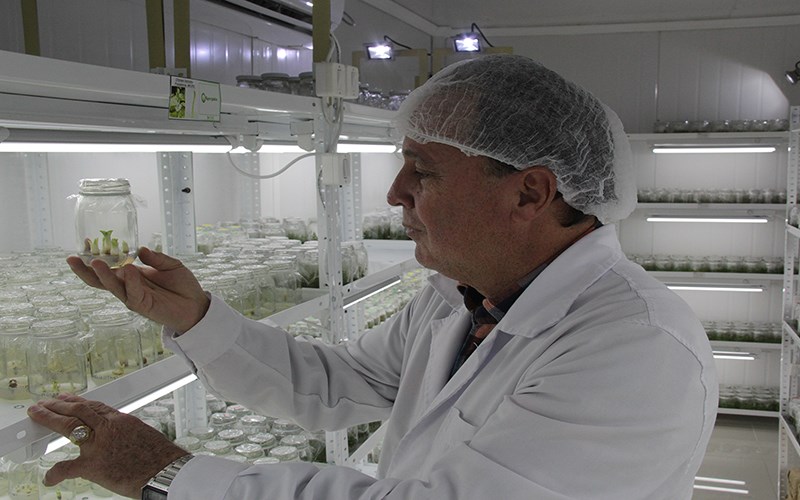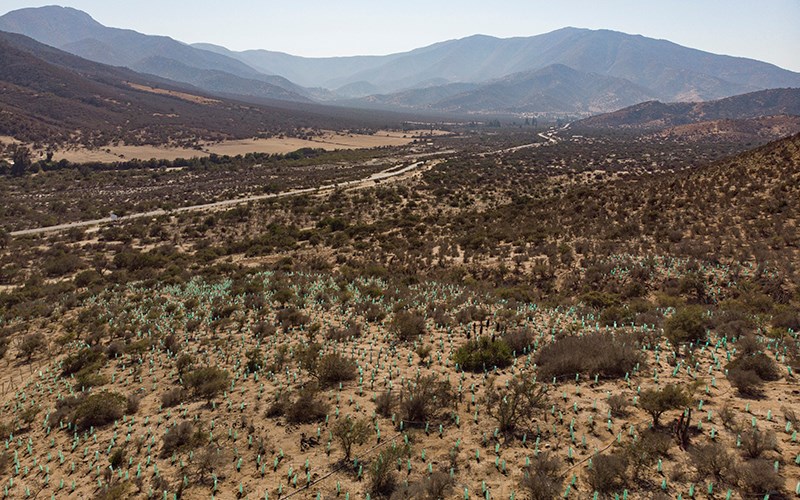Los Pelambres plants 207 hectares of native vegetation in Choapa
28 October 2020
The company has completed a species enrichment programme at the Monte Aranda Estate, one of the seven locations it protects and conserves Choapa’s ecosystems.
In total, more than 367,000 plants, shrubs and trees from 28 species were planted in three different habitats; native forest, semi-arid and recovered streams.
As part of its environmental commitments, Minera Los Pelambres (MLP) has recently completed an extensive native species enrichment programme at the Monte Aranda Estate, in the Los Vilos commune. This is one of the seven areas the company has been managing since 2007 to protect and conserve the ecosystems of Choapa.
More than 367,000 specimens from 28 different herbaceous, shrub and tree species were planted over the last few years in this area as part of the Compliance Programme agreed with the Superintendency of the Environment (SMA).
“They are native species that have been grown in nurseries using an in vitro system or through the reintroduction of seeds that once populated this area. Therefore, we are giving life back to the land and generating a true green lung for the valley,” said Alejandra Medina, Manager of Public Affairs at Minera Los Pelambres.
In total, 207 hectares in three different habitats were planted; native forest, semi-arid and recovered streams. Algarrobos, guayacanes orchids and quillayes were planted adding to the more than 240,000 plants, shrubs and trees that have been planted in the El Mauro, El Romero, La Aguada, Tipay and El Mollar areas, in total enriching and reforesting an area of 1,500 hectares.
“We have already completed the final report and we are waiting for the authority to evaluate the programme. We have worked very hard for more than three years so that these areas can contribute and add value to the protection of the region's ecosystems”, commented Carlos Tamayo, the company's Environmental Manager.

Production and plantation
Plants were grown for the programme using a collection of seeds and cuttings (stem fragments) as the main means of propagation, together with in vitro techniques used for the guayacán, adesmia and orchid species.
The planting programme included preparing the site, installing the irrigation system, preparing the sections of land where the plants were planted, and building fencing and firebreaks. Maintenance is undertaken to ensure the survival of the plants, using irrigation, pest control and monitoring the individual plants.
Complying with the company’s environmental commitment is also important for the workers in the area, who are part of the reforestation team at Minera Los Pelambres. “You can already see the woods that have grown since they were planted a few years ago. Now the woods are well-developed and very large. In fact, very few open areas remain in Monte Aranda and the change is obvious to anyone who is from the area”, says Yesenia Tapia, MLP’s Field Manager at Monte Aranda.

Historical preservation of areas of high ecological value
The reforestation is not an isolated action. Since the late 1990s, Minera Los Pelambres has been helping protect the province’s ecosystems. This has meant that it has been possible to rescue and conserve more than 27,000 hectares of land which has a high environmental and social value, including four areas which have been designated Nature Sanctuaries.
One of the first challenges was to protect the Conchalí Lagoon. This involved removing tons of rubbish and setting up a specific area for tourists and members of the Los Vilos community to visit, similar to what is planned for Cerro Santa Inés, another high ecological value site protected by the company.
“We are working to protect this place, that is, we monitor the flora and fauna, control the exotic and invasive species, and are now building a Visitor Centre so that the community can learn about this important conservation site,” said Marcela Poulain, the company's Head of Regulatory Risk Management.
In addition, Minera Los Pelambres protects four other areas with high ecological value; Cordillera Sur, a protected area to guarantee livestock activity in the high mountains by protecting the Andean plains; Alto Andino, a territory made up of the Piuquenes, Hualtatas, Quebrada Talca and Manque areas, where a high Andean wetlands and wildlife habitat conservation area is planned; Fundo Monte Aranda where, in addition to the reforestation, there is a conservation programme for the Chilean Palm –the only palm native to the country; and the Quebrada de Llau-Llau, where species such as the chequén and canelo are protected.
